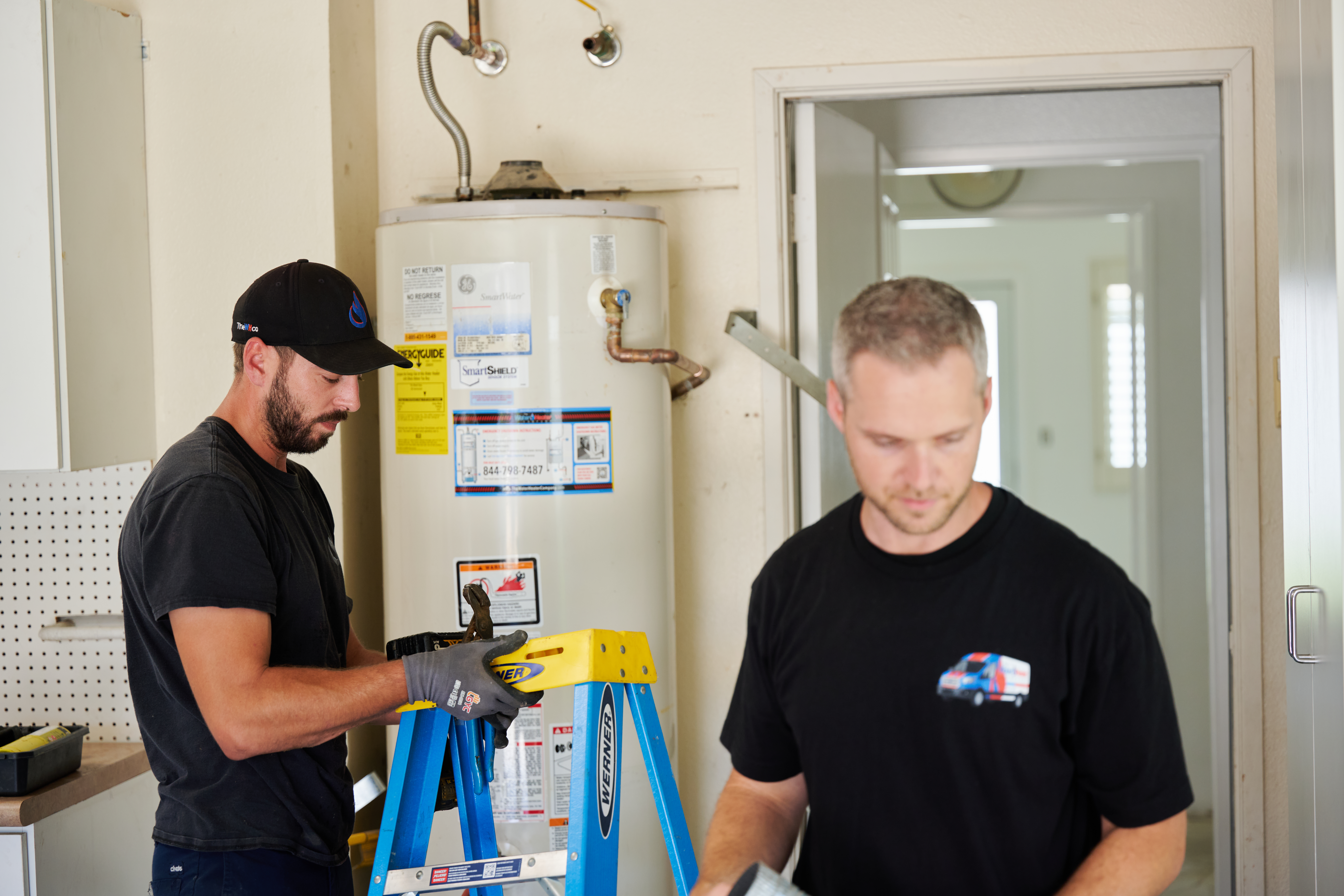
Learn about the different factors that go into water heater gas valve replacement costs to see if you should DIY the project or call a pro.
Water in your water heater pan can be the first sign of a leak
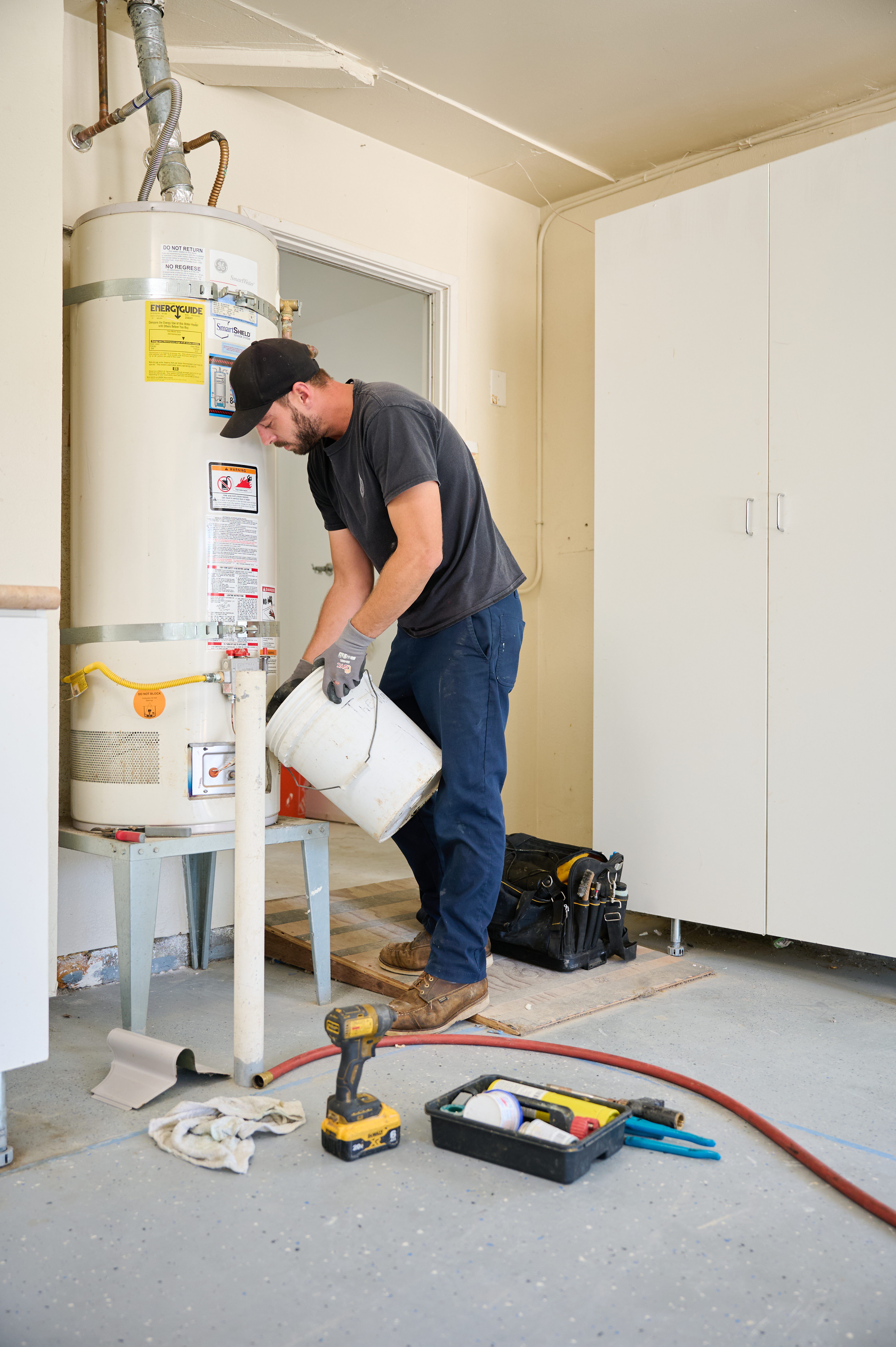

A leaky drain valve is the biggest cause of a hot water leak.
Plumbers charge between $45 and $600 per hour, depending on when you call and where you live.
Water heaters should be repaired by a qualified plumber.
Routine inspections and regular maintenance can help catch leaks as soon as they appear.
A water heater pan, also known as a water heater drain pan, sits underneath your water heater to collect water in the event of a small leak. Ideally, the pan should be dry, but if you find water in it, that means your water heater is leaking.
Why is my hot water heater leaking? Leaks can happen for several reasons. Sometimes the problem is serious and you may need to replace the entire unit; other times, the leaks are totally fixable.
To diagnose the water heater problem on your own, arm yourself with a flashlight and a paper towel and keep an eye out for the following biggest causes of water leaks.
We highly recommend inspecting your water heater annually for signs of degradation. If you spot any potential warning signs, consider contacting a local plumber.
A water heater’s drain valve is threaded into the bottom side of the tank and flushes out any sediment that collects inside.
If you find water in your water heater pan, a leaky drain valve is likely the culprit. Check the valve’s outlet with a paper towel to see if this is where your water is coming from.
Before trying to fix the drain valve, turn off the appliance's water supply and power. Open a hot water faucet inside the house for a few minutes to relieve pressure in the tank. Then, try tightening the valve by hand if the leak is coming from the drain valve nozzle, as the valve might not be completely closed.
If it continues leaking, use a wrench to tighten the valve. Place the wrench on the body of the valve instead of the outlet and turn it slowly and carefully. Too much pressure could break it off or worsen the leak.
If the valve still drips water after tightening, you’ll need to replace it.
As the water heater ages, the inlet and outlet pipe connections may loosen. This can happen for several reasons, including:
Settling of the house
Sediment buildup in the pipes
Corrosion on the pipe fittings
Excess pressure on the pipes
Older, worn connections
A drain valve that’s close to failing
Noticeable leaks or inconsistent water temperatures can indicate loose connections among the pipes serving the water heater.
Although it’s tempting to just tighten the connections with a wrench yourself—and this may work—you should have a local plumber check the connectors. If you overtighten the connections, you could crack them, creating a more severe leak. Turn off the water supply before trying to tighten them.
If the connectors have corrosion or cracks, tightening them will not fix the leak. For this type of damage, a plumber needs to inspect the system and make any necessary repairs to the inlet and outlet connections. If the connectors are corroded to the point that they’re stuck on the pipes, the plumbers might need to cut the connectors off and rework the pipes.
If the leak isn’t coming from your drain valve, look at the tank itself next. A leaky internal tank causes water to slowly seep out and pool at the bottom of the tank and in the water heater pan.
The tank incurs damage when sediment builds up inside, causing it to crack. Flushing and draining your hot water heater on a regular basis to flush out sediment prevents this issue. On average, having a plumber flush a water heater costs between $75 and $200, though it’s possible to DIY flush a tankless water heater or DIY flush a tank-type water heater.
If the tank is cracked, it’s almost never repairable. It will need replacement. However, before you go to the expense of replacing the unit, you should have a local plumber inspect the system. Perhaps another problem that is repairable is causing the leak.

The temperature and pressure (T&P) relief valve automatically opens to discharge hot water in case the tank reaches an extremely hot temperature or high pressure. Typically, this is a brass valve mounted near the top of a hot water tank with a pipe coming down to about 6 inches off the ground.
Wipe a paper towel on the bottom of the downtube. If it’s wet, this is the source of your leak. In most cases, you’ll need to completely replace this valve.
It’s best to hire a repair professional to replace the T&P relief valve. This is an important component that needs to be installed correctly for the appliance to operate safely.
If you decide to try to do it yourself, shut off the power supply and water supply. Remove some water through the tank’s drain valve to relieve pressure on the tank. The T&P relief valve will have a discharge tube that you need to unscrew and remove by hand or with a wrench. Then use a wrench to unscrew the old valve. Twist the old valve carefully to avoid damaging the connector threads on the water heater.
Clean the connector threads and apply plumber’s tape. Screw the new T&P valve onto the threads and tighten it carefully with a wrench. Screw the discharge tube back onto the valve and restore the power and water supplies. Watch the valve for leaks.
If you find water in your water heater pan, the worst-case scenario is a leak due to deep internal corrosion. This may only be a small leak at first, but it will gradually get worse and occasionally cause a blowout that leaves your utility room a sopping mess.
Unfortunately, there aren’t many early warning signs that your water heater is about to fail because tanks rust from the inside out. That said, some possible signs to look out for are corrosion around the base of the tank or a rusty wet stain on the ground underneath.
To prevent this problem, water heater tanks have an anode rod on the interior. This rod consists of aluminum, zinc, or magnesium. Instead of allowing corrosion to affect the interior of the steel hot water tank, any corrosive materials in the water cling to the anode rod and corrode it. Once the rod corrodes away, though, the corrosive materials begin affecting the steel in the tank, which could lead to a leak. The anode rod needs occasional replacement at least every few years.
You’ll need to completely replace your water heater tank if it’s internally corroded, which makes replacing the anode rod in a hot water heater an important maintenance task to prevent leaks.
Turn off the water and power supply to the water heater. Drain the tank completely if the anode rod is on the bottom or side. You can drain the tank partially if the rod is accessible from the top.
The bolt holding the anode rod should have a plastic cap with a hexagon shape over the top. Remove the cap and unscrew the bolt to loosen the anode rod. This bolt will be very tight because of the seal on the interior of the tank. Prepare for some water leakage during this process. Remove the rod. You might have to bend it to take it out of a tight space.
Place plumber’s tape on the threads for the new anode rod and tightly screw it in place. This is a common place for leaks after you finish, so perform this step carefully. Turn the water and power back on and watch for leaks.
A professional can replace the anode rod for you during an annual maintenance visit, too.
Condensate from combustion water vapor can run down your water heater duct into the flue through the center of a gas-fired heater and drip down into the center of the firing chamber.
Eventually, the bottom of the fire chamber can rust through and allow water to drip into the water heater pan.
Watch for drips from the duct and listen for a sizzle as it drips into the firebox. If this has been happening continuously for a long period of time, you will see large piles of rust around the firebox.
When you see condensation, the most common problem is a loose or dislodged flue cap at the end of the vent pipe, which extends vertically out of your roof. Make sure the cap is tightly affixed to the end of the pipe. A loose cap could allow rain to fall into the pipe.
Look for any obstructions in the vent pipe. If the cap is loose, you might have twigs, leaves, or even a bird nest in the pipe. You’ll also need to inspect the vent pipe for cracks that could be allowing water to collect. You might be able to use temperature-sensitive sealant to repair small cracks.
If your vent pipe does not have insulation, consider wrapping it in insulation to reduce the chance of condensation forming.
Another potential problem is a vent pipe that’s too narrow to meet local codes. When the pipe’s opening is too small, condensate is more likely to form. If the pipe is too small or severely cracked, it will need replacement.
Instead of trying a DIY job, the best step is to call a professional plumber to diagnose the problem and determine your next steps.
If you can’t find a leak coming from any of the parts on your water heater, it could be a leaky pipe or valve located above the water heater. A limescale buildup commonly causes these leaks that start as dampness and escalate to trickles over a few weeks.
You can check by wiping around the top of the tank with paper towels and looking for wetness, or you can hire a plumber to investigate.
Before attempting a repair, shut off the water supply. To temporarily DIY repair leaks, wrap the problematic area in pipe repair tape. Epoxy putty can also fix some of these leaks. After the temporary fix, call a plumber for an inspection and advice on long-term solutions.
If the leak is significant, you might need to replace the section of leaking pipe. Rely on a local plumber for this job.
You should call a repair professional whenever you notice leaks or other problems with your water heater. Fixing a water heater yourself can feel intimidating—and for good reason. Water heaters use complex plumbing and heating systems that make repair work difficult. DIY work can lead to mistakes that damage the water heater.
Water heaters can also be dangerous to handle. An electric water heater uses a lot of power, and you risk an electric shock if you work on the system yourself. Gas water heaters are also dangerous for homeowners to work on, as you risk a gas leak or fire if you make a mistake.
For these reasons, we do not recommend fixing a water heater yourself. Who fixes water heaters? We suggest that you contact a local hot water heater repair professional for help with a leaking or damaged water heater.
Your home's water heater needs to be routinely monitored and maintained. Like all major home appliances and systems, water heaters perform better when they're being properly cared for on a routine basis. Preventative maintenance on a water heater can also prevent costly problems and flood risks down the road by catching little issues before they escalate. Here's a checklist of essential tips for water heater maintenance.
Call a professional for a water heater maintenance checkup once a year.
Inspect the unit yourself every couple of months for signs of leaks or other issues.
Test the T&P relief valve annually. A broken valve could cause leaks or allow too much pressure to build in the tank, leading to a leak at a weak spot.
Flush the tank once a year to clean sediment from the interior of the tank that could lead to corrosion.
Replace the anode rod at least every few years to prevent corrosion inside the tank that could cause leaks.
For a tankless water heater, replace the intake filter at least annually to prevent corrosive items from reaching the interior of the system.
Consider adjusting the temperature of the water heater to 120 degrees. Higher temperature settings may increase the pressure on the tank, leading to leaks at weak spots.
A professional can perform most of these tasks for you as part of an annual maintenance checkup. If the pro finds any parts that need replacing during this check, the preemptive repairs can prevent the appliance from breaking down.
From average costs to expert advice, get all the answers you need to get your job done.

Learn about the different factors that go into water heater gas valve replacement costs to see if you should DIY the project or call a pro.
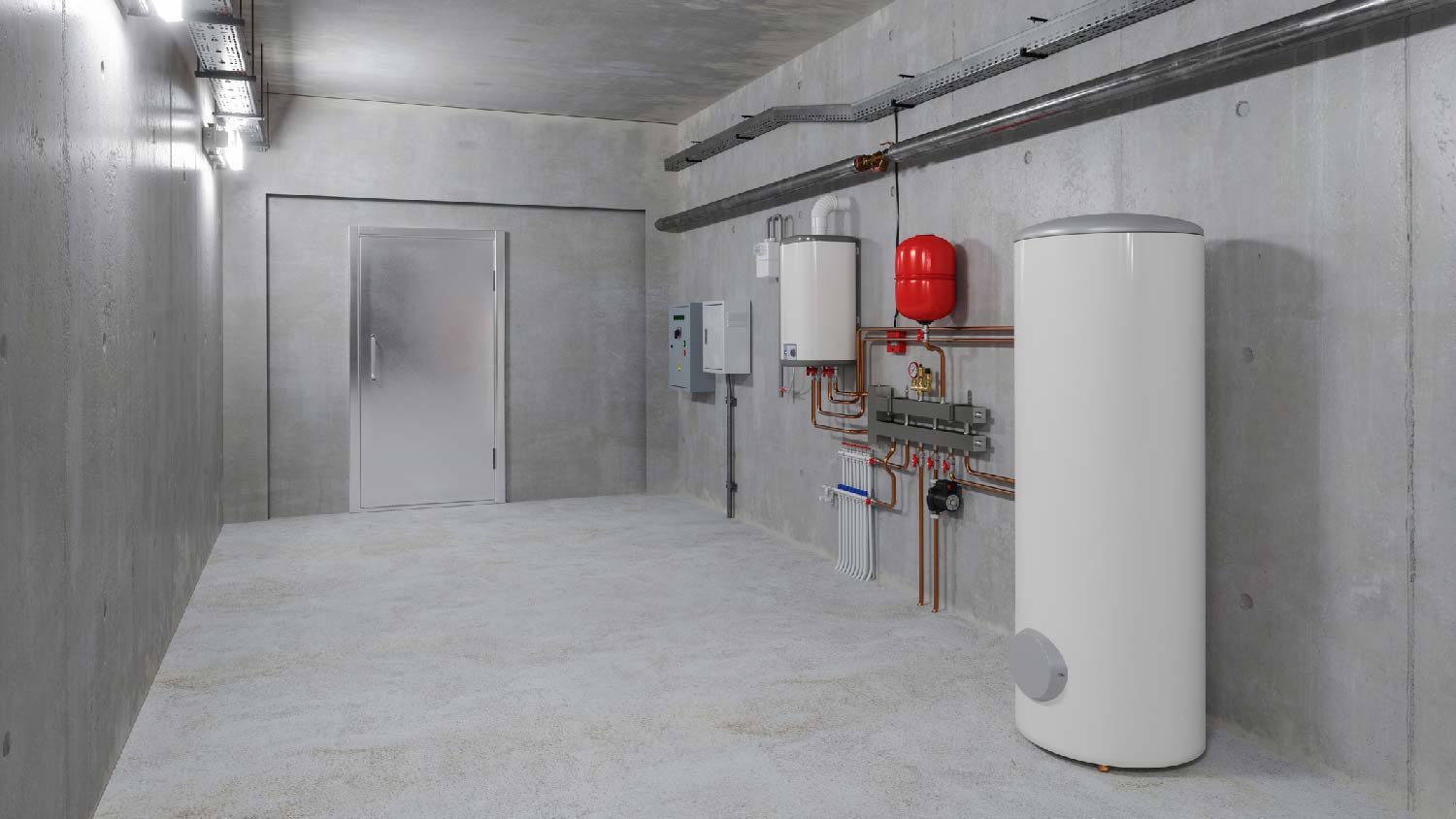
Learn all the factors that influence the cost to install a heat pump water heater at your home.

Wondering how much a water heater expansion tank costs? Use this cost guide to get an accurate estimate and learn how to choose the right one for your home.
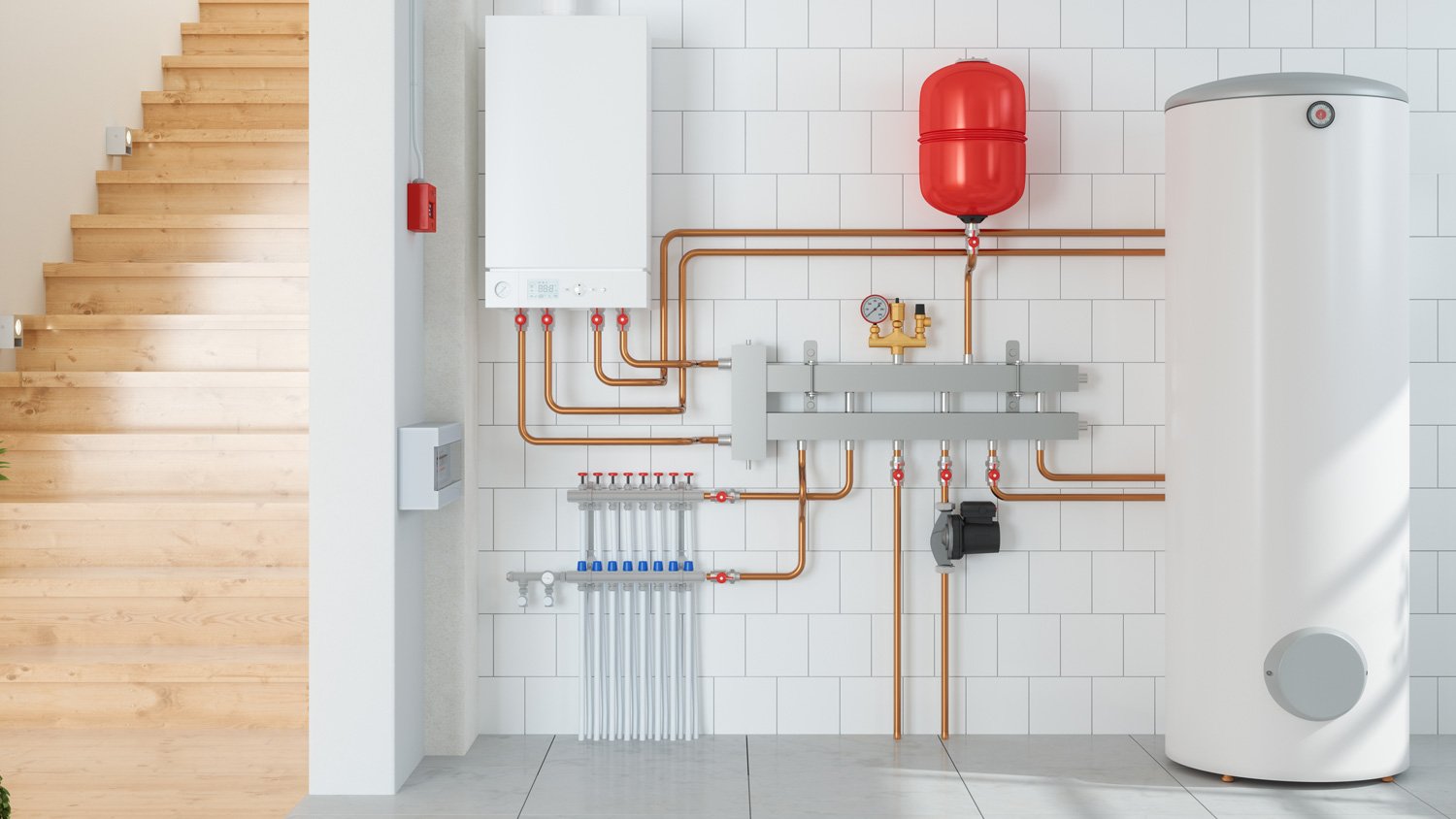
What is a water heater expansion tank? It's a feature on some types of water heaters that allow pressure relief. Find out more about how it works.
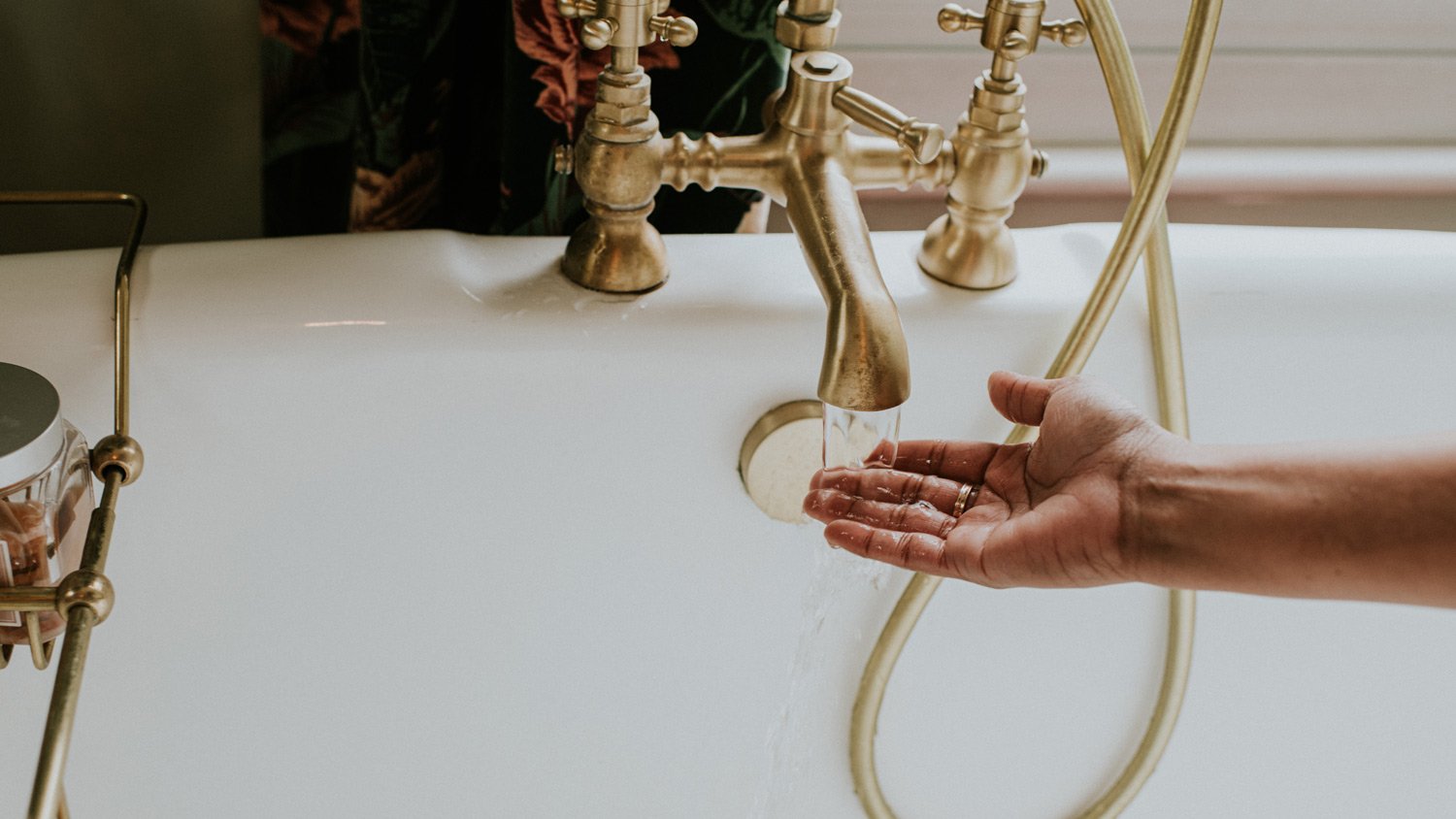
How long does an electric water heater last? We’re breaking down what you need to know about electric water heater longevity. Read on to learn more.

If your water heater isn't heating up properly, you could have a drainage issue. These common causes of water heater not draining could be to blame.